OPS & TRAINING
Fighting as one at Exercise Trident
11 Nov 2024
Singapore’s army, navy and air force work together with Australian troops to capture targets in both jungle and urban warfare.
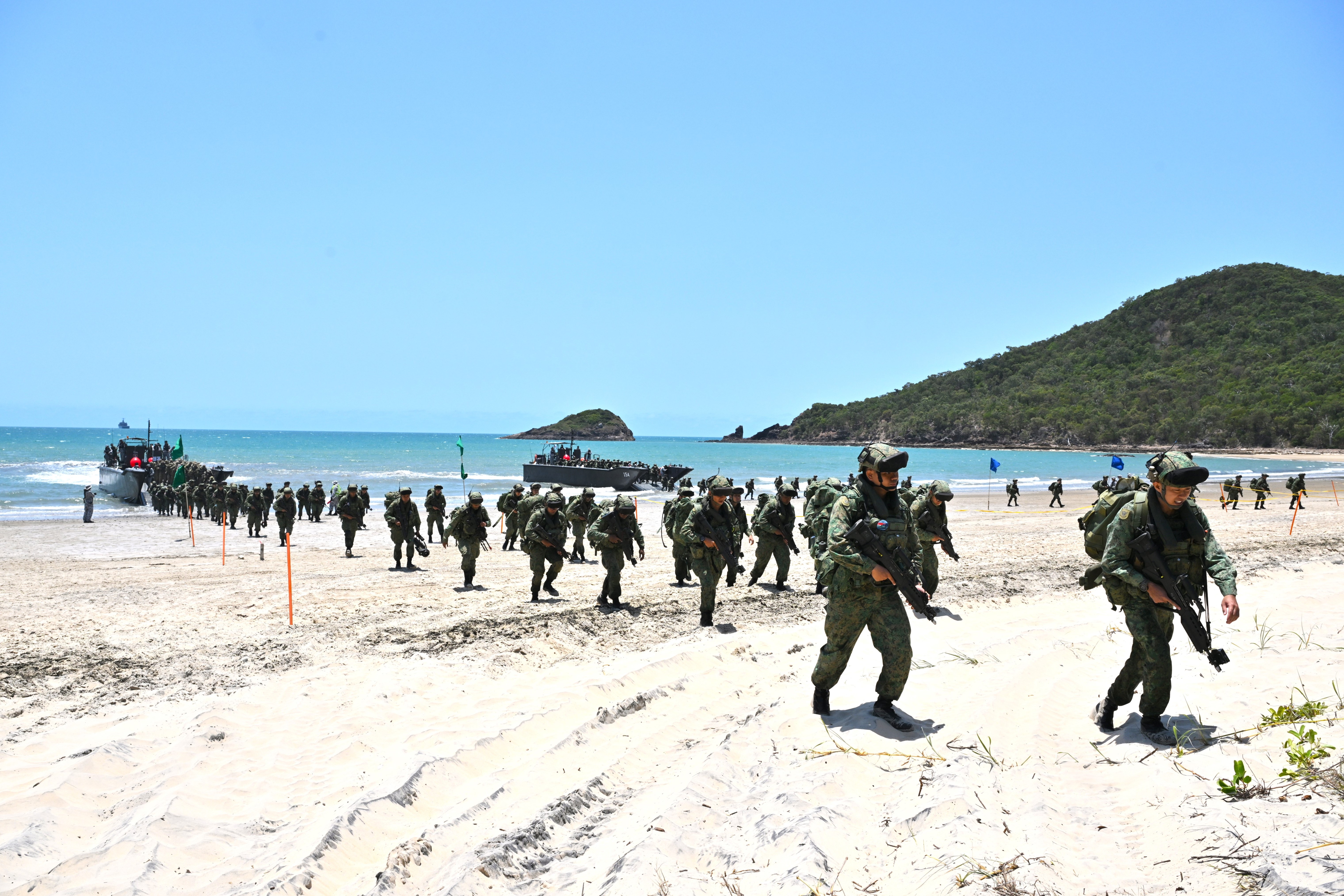
The beachfront is dark and silent, dim rays revealing tiny mounds in the distance. As minutes pass, the whirring of engines can be heard.
A ramp is lowered onto the sand. The uneasy stillness of the shore is now broken by the sound of angry splashing as boots stomp through the shallow waters.
The soldiers have finally landed, marking the start of a dawn attack mission at Exercise Trident.
Troops from the Singapore Armed Forces (SAF) and Australian Defence Force (ADF) fight side-by-side in this flagship bilateral exercise, which takes place from 6 to 15 Nov at Shoalwater Bay Training Area in Queensland, Australia.
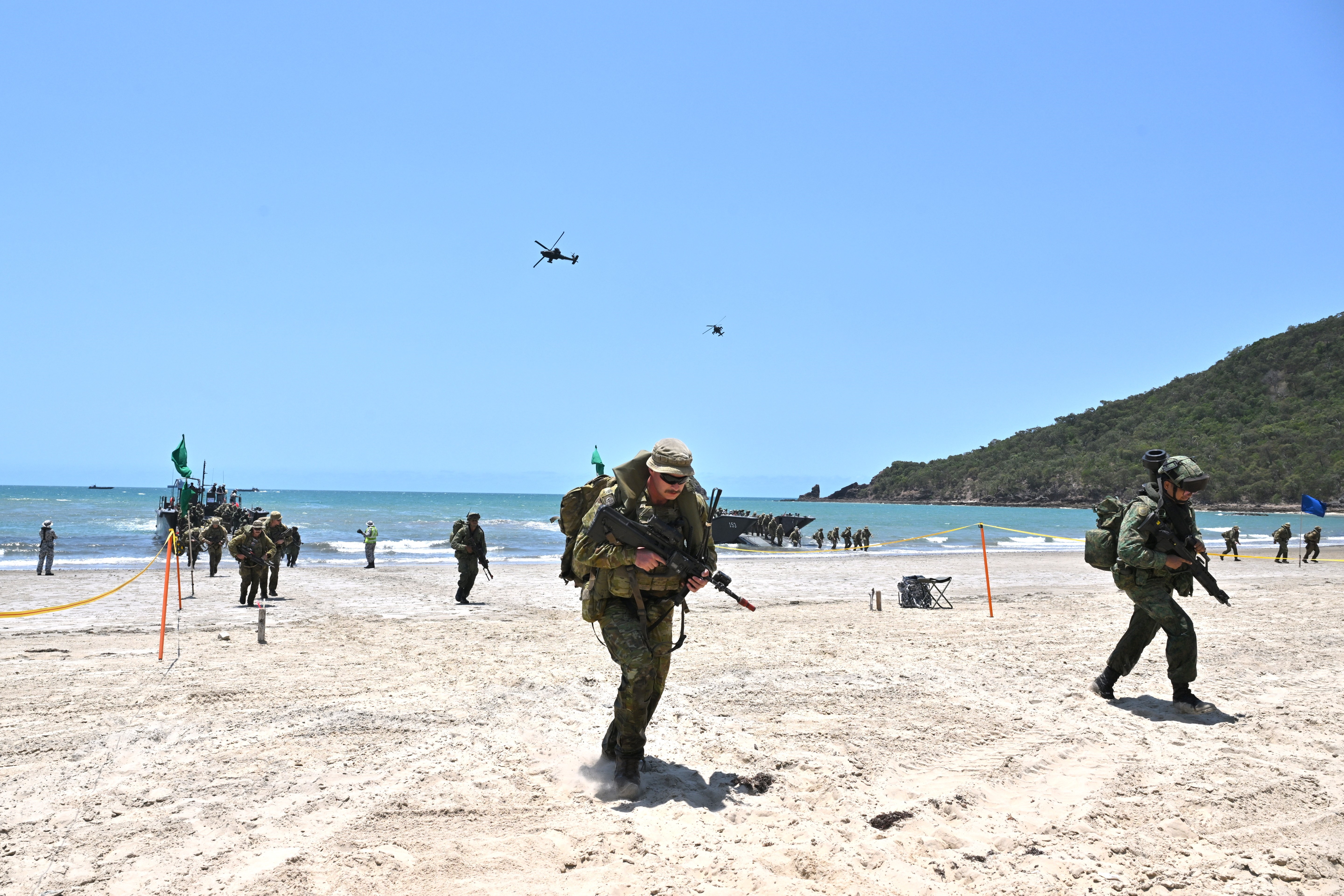
For the first time at Exercise Trident, the Singapore Army, Republic of Singapore Navy (RSN) and Republic of Singapore Air Force (RSAF) will take part in two missions involving jungle and urban terrains.
This year’s edition sees the participation of over 1,900 personnel, with about 200 from the ADF, which includes 5th Battalion, Royal Australian Regiment (5 RAR) and also 1st Brigade, Australian Army at the Headquarter Command Post.

Senior Lieutenant Colonel (SLTC) Enriquez Michael Zachary, the SAF Lead for Exercise Trident 2024, noted the importance of being able to conduct integrated tri-Service operations in this vast training area.
“We have benefitted greatly from 10 years of participating in Exercise Trident because we can increase the scale, complexity and training realism of our exercises here at Shoalwater Bay Training Area, together with our ADF counterparts.”

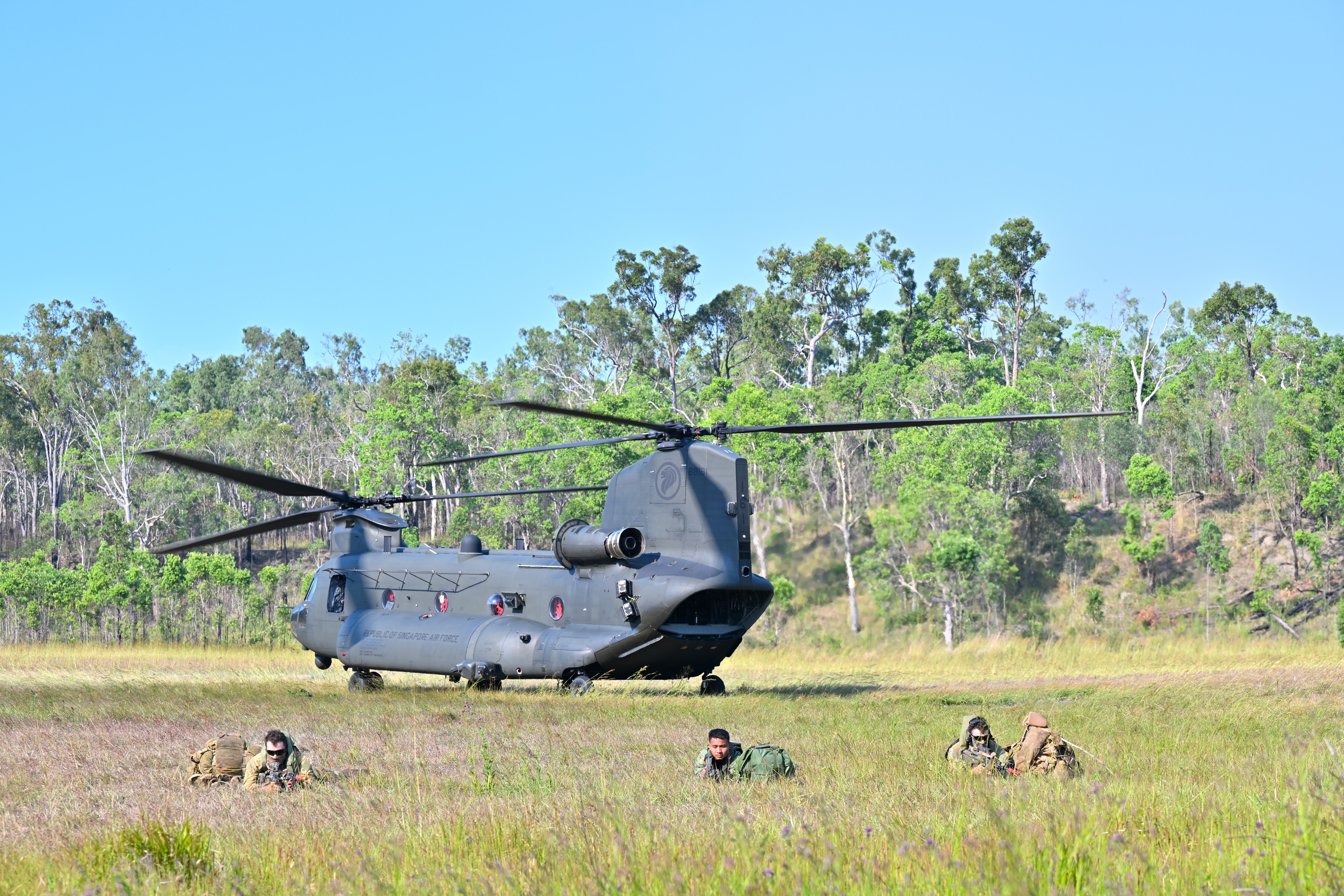
In this first mission, troops were heli-lifted inland by the RSAF’s CH-47F and H225M helicopters to fight and take out a conventional or jungle objective.
In the second mission, troops were projected onto the beach by Fast Craft Utility (FCU) and Fast Craft Equipment and Personnel.
They then marched inland to link up with soldiers from the first mission, to make their way together to the Urban Operations Training Facility (UOTF) to take out targets in built-up urban environments.

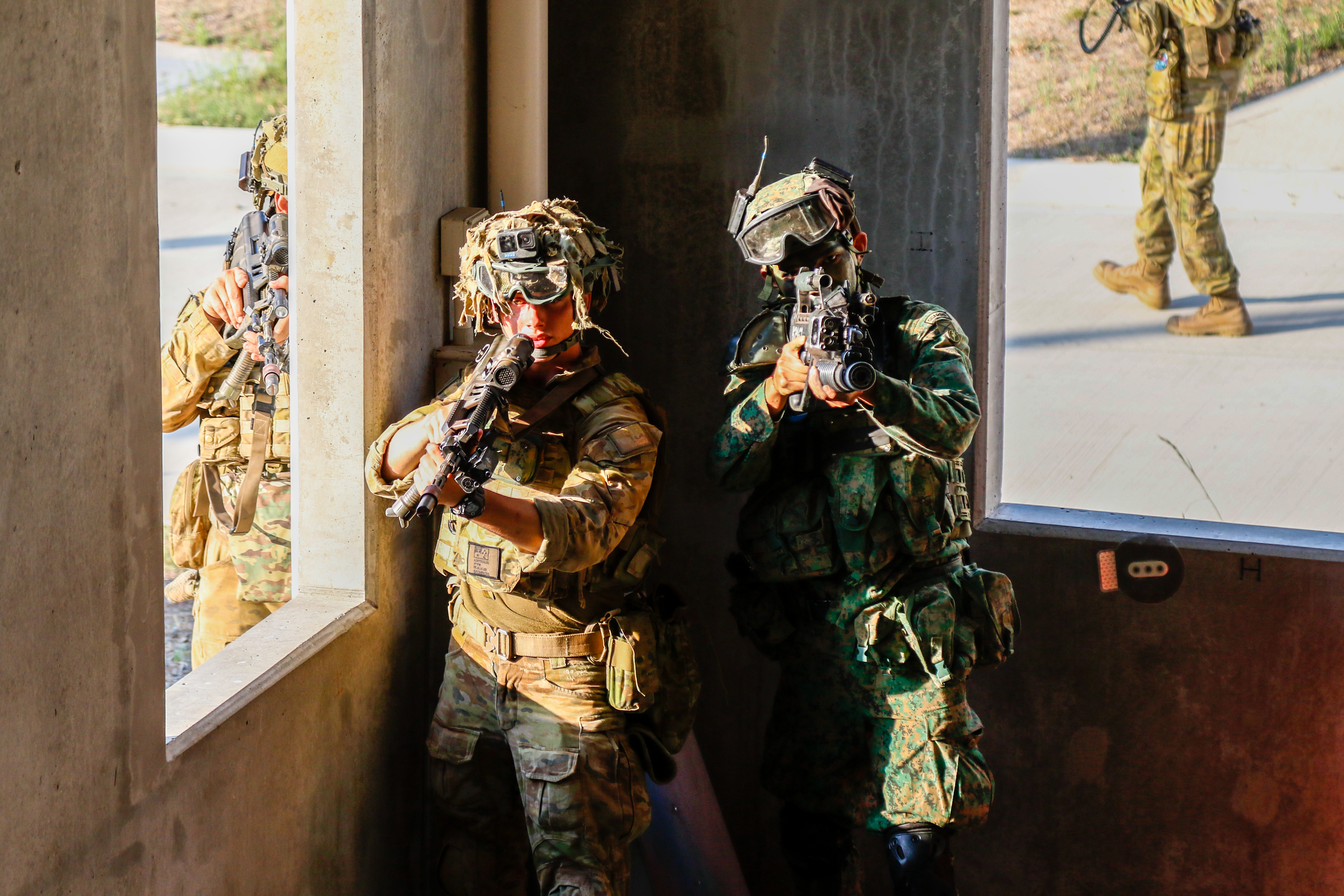
Air Force Engineer (Flight Engineer) Military Expert (ME) 2 Premraj S/O Royston is part of the air crew, making sure that the systems are operating as planned and aiding the pilot in decision-making when contingencies arise mid-flight.
“When we carry out ship-to-shore operations in Singapore, it’s usually only from land to land, or from land to ships. Here, we can put the two together – we may carry troops from land to bring them to the ships and vice versa,” said the 27-year-old.

To prepare, the crew carried out work-up training, going through the process in parts before putting them altogether in theatre.
“What we do in our day-to-day training is like a puzzle piece, and coming here with the army and navy allows us to put all the pieces together to see the whole picture and understand exactly what we are training for.”
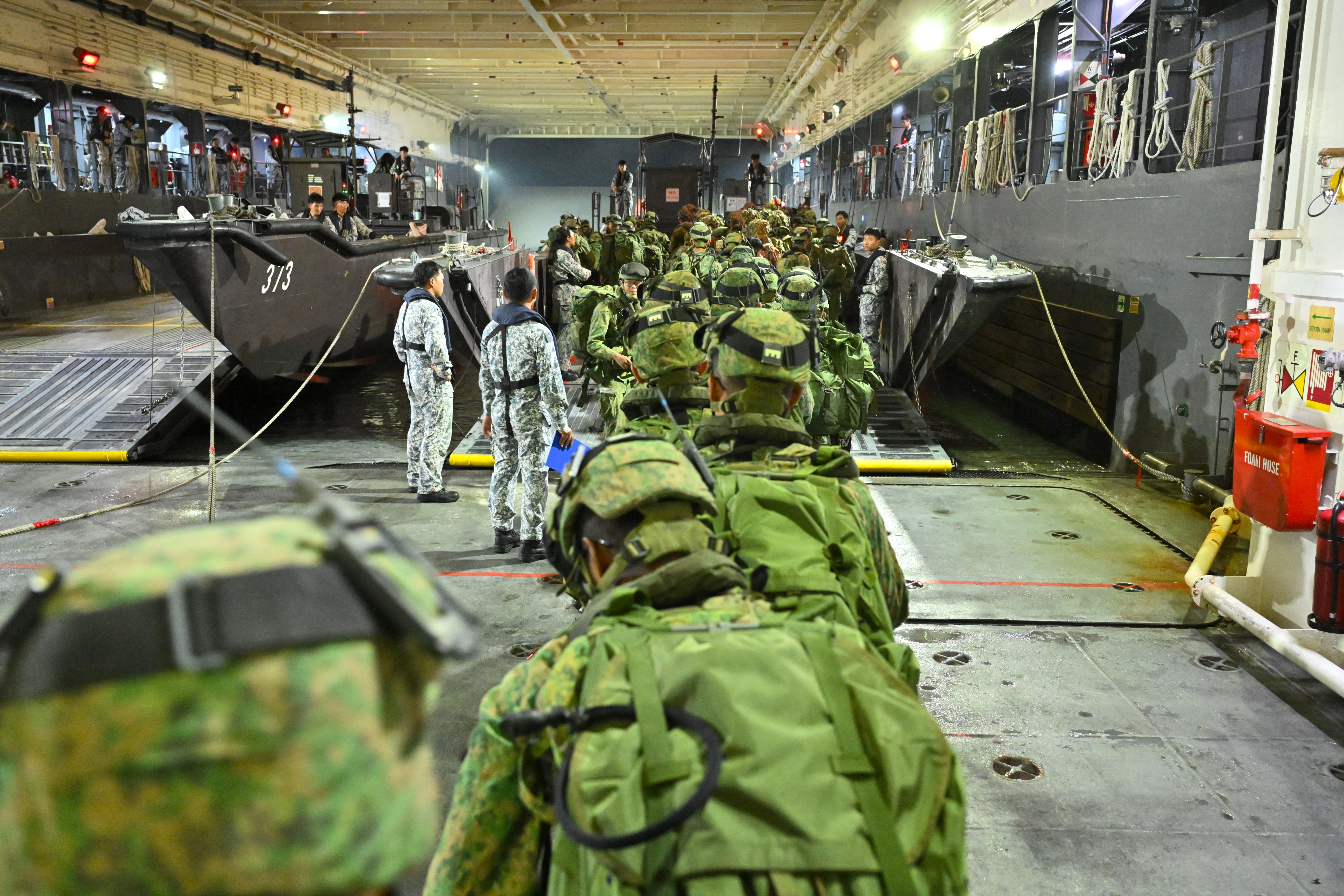
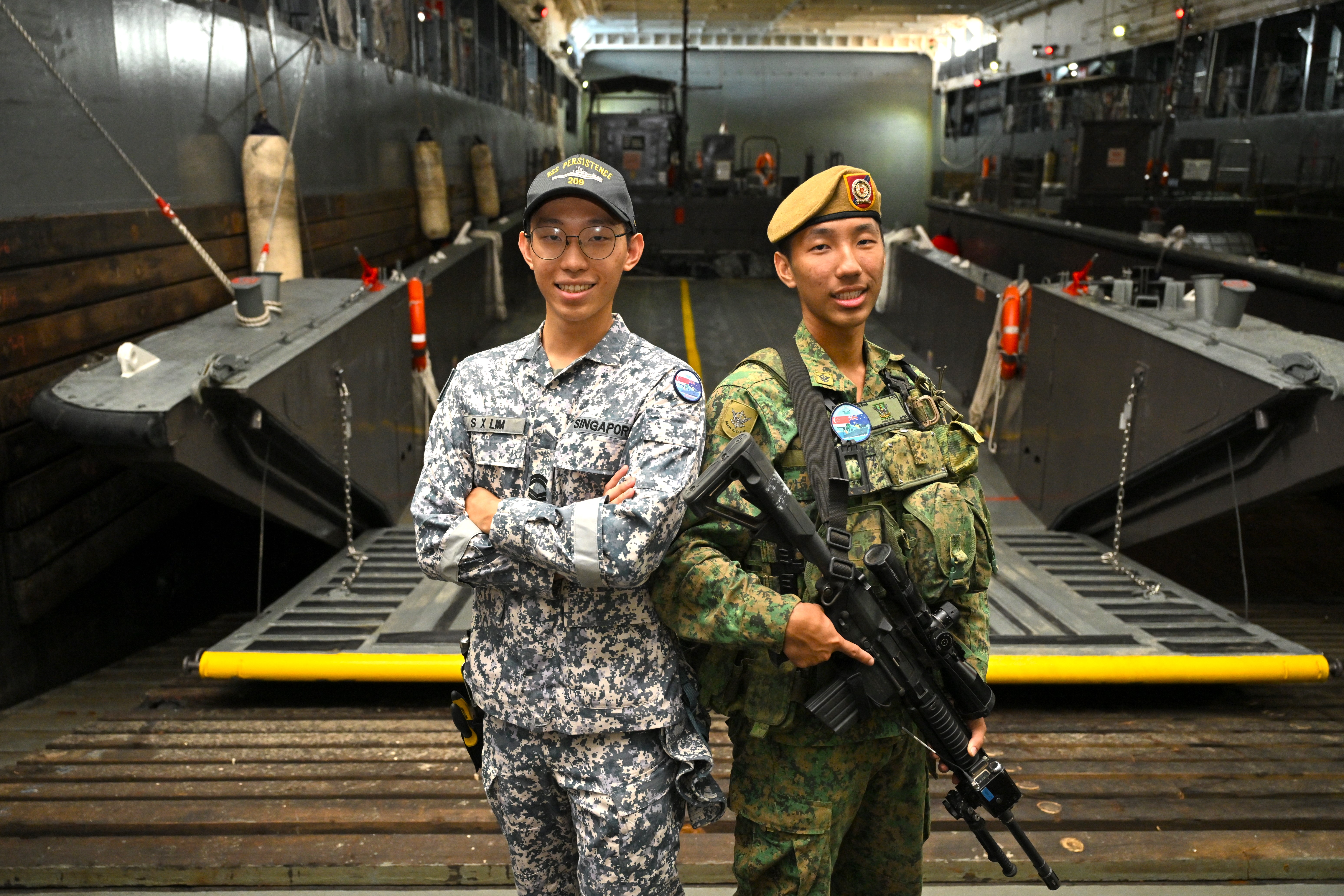
Full-time National Serviceman (NSF) Corporal (CPL) Lim Shi Rong never imagined he would get to go to Australia, and for a large-scale deployment like Exercise Trident.
The Marksman in 3 Gds, whose role is to spot enemy targets and relay information on their location to his company, found the experience eye-opening.
Said the 21-year-old: “This is my first time on a helicopter and it’s an interesting experience. To prepare for the ship-to-shore projections, we carried out rehearsals on board the LST. I got to work closely with the ADF and see their tactics and SOPs (standard operating procedures).
“The vast terrain here has also given me the chance to train with the air force and the navy. It’s a rare chance that I can’t get in Singapore.”
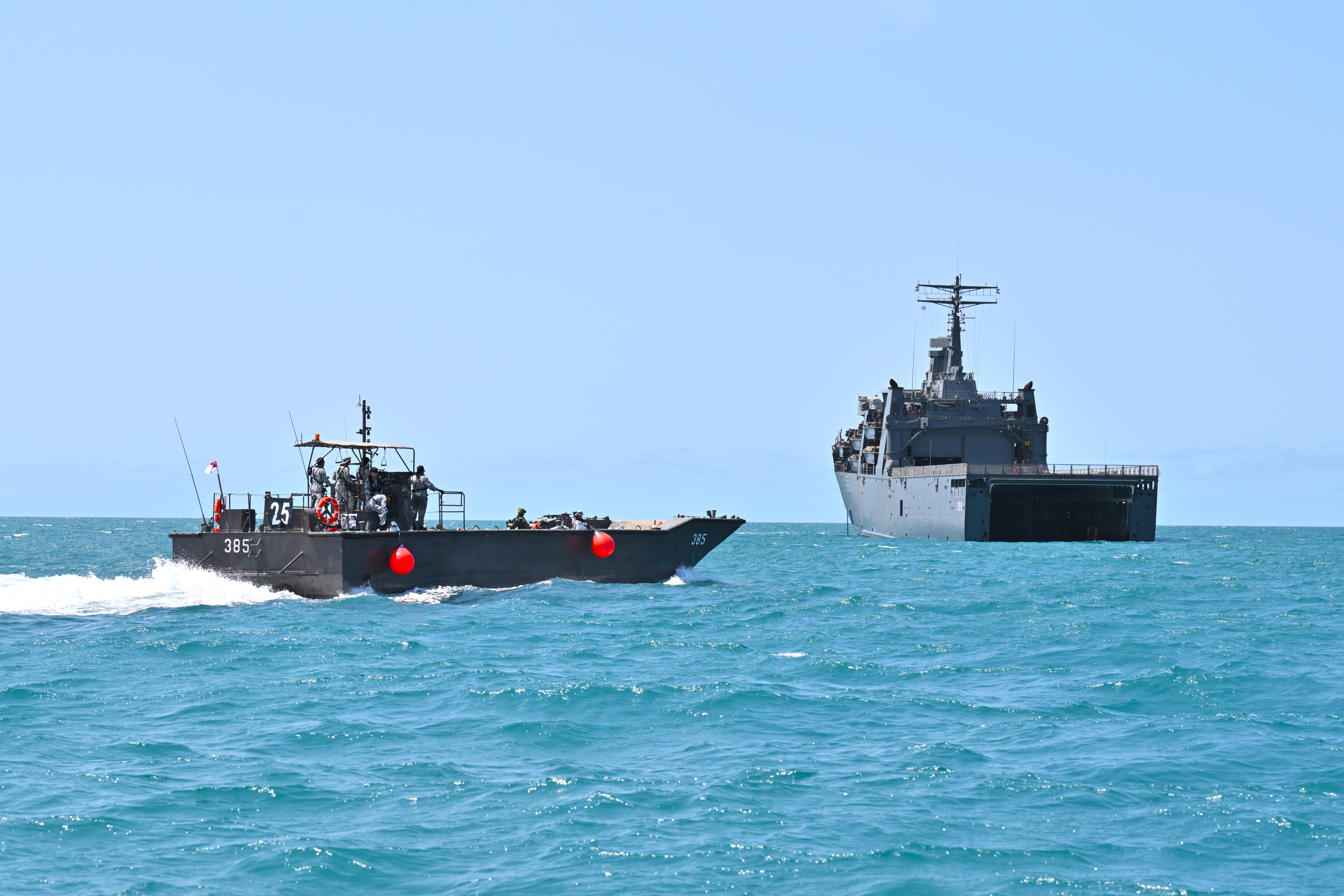
Two Endurance-class Landing Ships Tank (LSTs) – RSS Persistence and RSS Endurance – are participating in this year’s exercise.
The ships support both missions by projecting the troops onto land. This is done through sea via fast craft, and through air by the RSAF’s CH-47F and H225M helicopters.
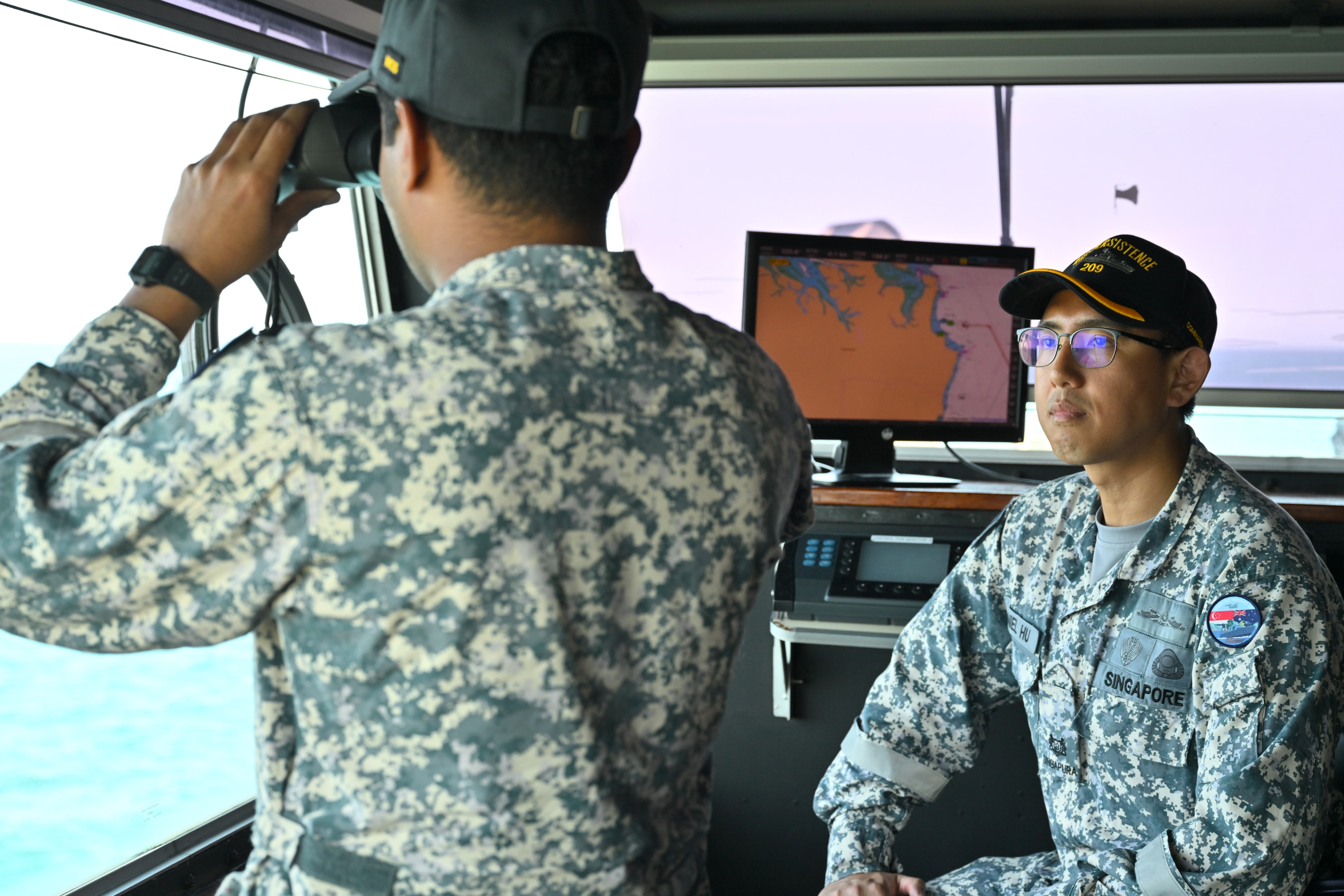
Multi-ship exercises like these are a rare opportunity, as Singapore’s waterways are narrow and congested, said Major (MAJ) Daniel Hu, Commanding Officer of RSS Persistence.
“Here, we can deploy more craft, and conduct simultaneous ship-to-shore serials. With two LSTs, we double the number of people and land and sea assets we can launch and recover. This increases the complexity of the exercise.”
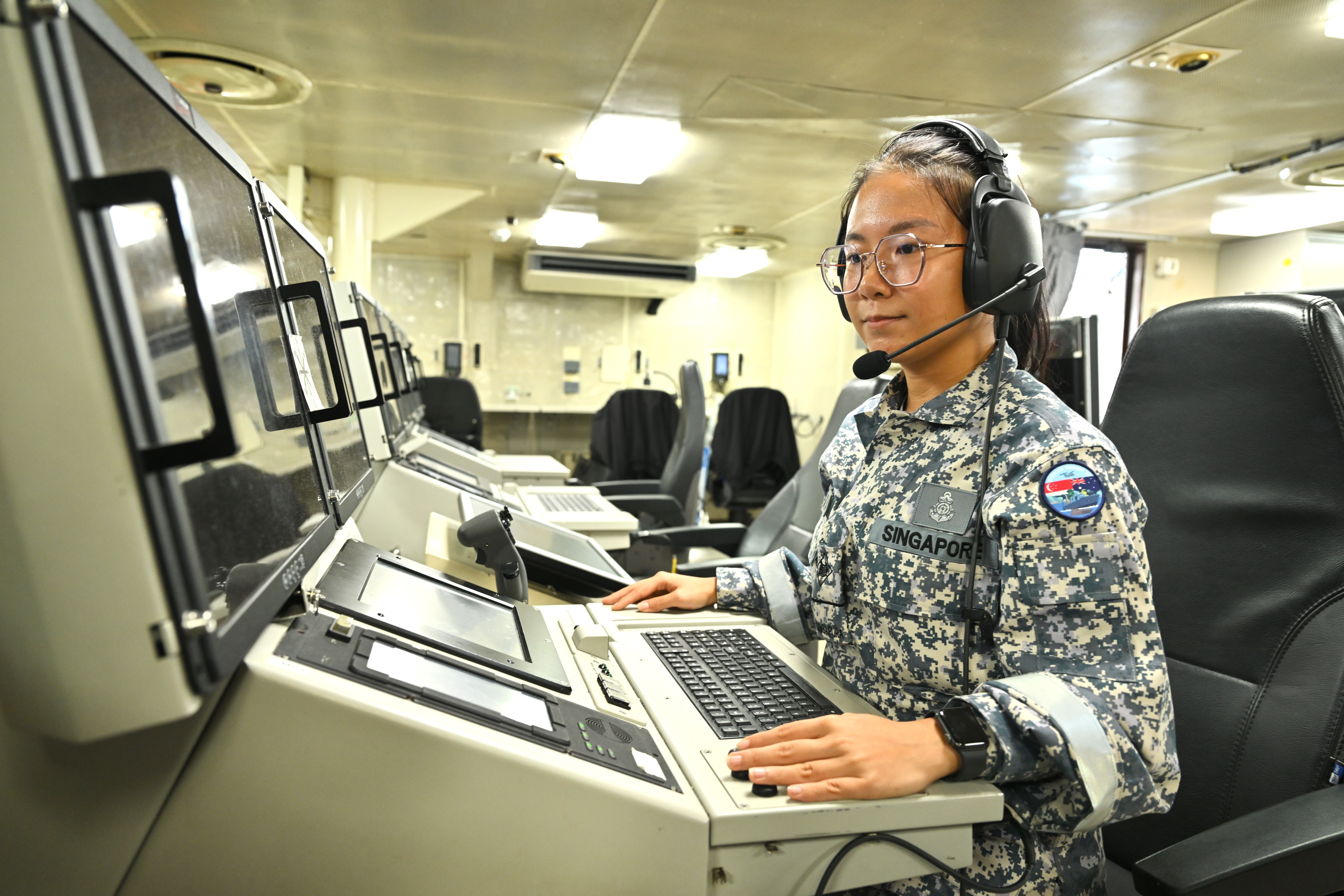
ME1 Celestia Poh wears many hats. During ship-to-shore operations, she plays the role of deck seaman, fighting rough sea states in the well dock to secure the fast craft with ropes when they return to the LST.
In heliborne operations, she takes on the role of flight deck seaman, securing the helicopters firmly to the decks so that they can refuel or and transfer personnel safely.
It’s a heavy responsibility, but the 24-year-old was ready to take on the many roles: “We had a lot of work-up training to prepare us for this exercise. This includes situation contingencies to avoid accidents and ensure the safety of the crew and other people around us.
“We have to multitask and maintain situational awareness, but our training and competencies allow us to achieve this successfully.”
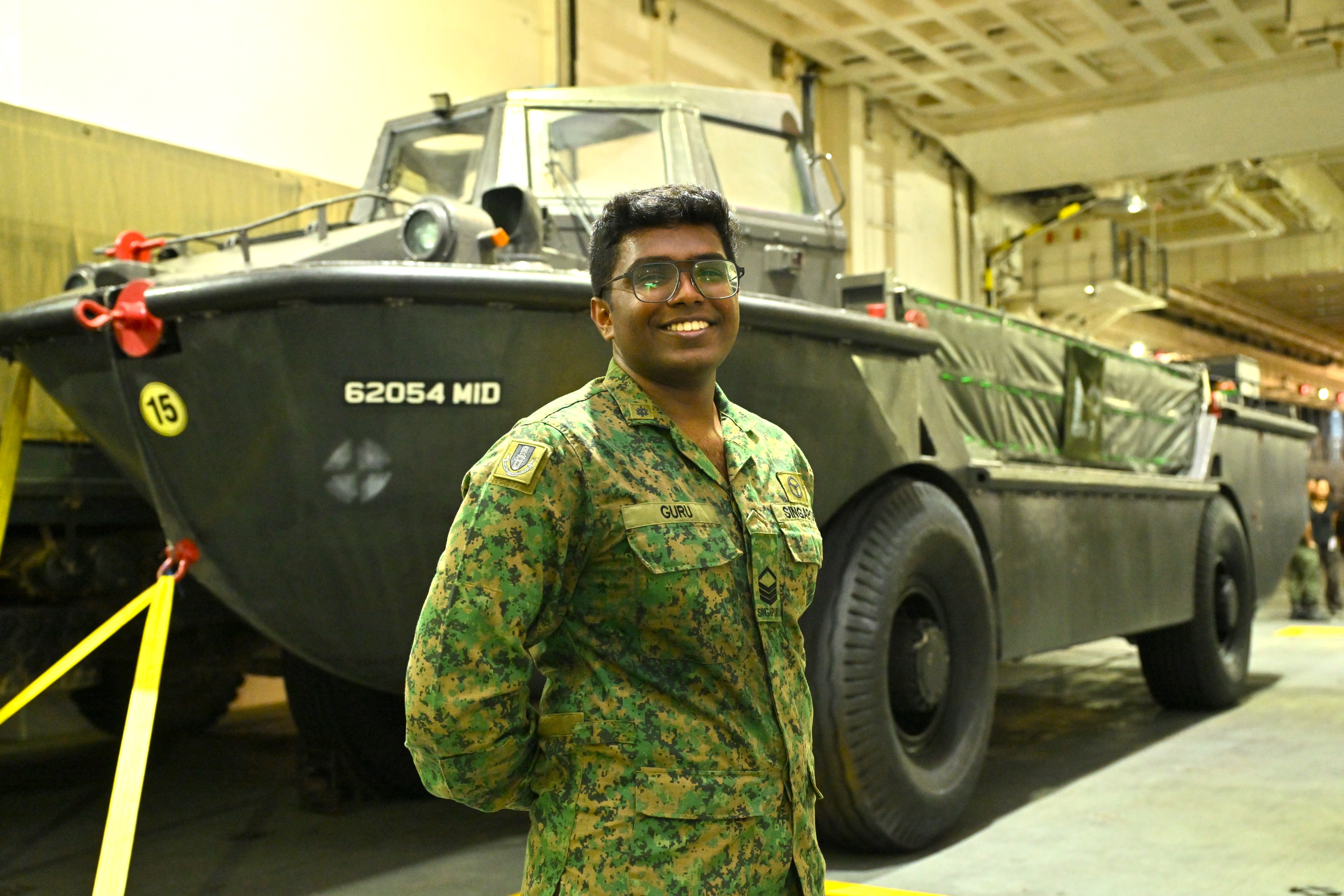
Unsung heroes: Supporting the troops in their missions are the soldiers from 3rd SAF Transport Battalion.
They carry out sea re-supply operations in the Lighter Amphibious Resupply Cargo (LARC) V, deploying from the LSTs onto shore and bringing loads and supplies deep inland, where the troops lie in wait.
The conditions were tougher than what the crew was used to, but they remained unfazed.
Sea Terminal Commander 2nd Sergeant (2SG) (NS) Bhaskar Guruprakash was in charge of the three LARC V vehicles involved in the exercise, navigating his vehicle and leading the fleet in the directions to take and formations to execute.
Said 23-year-old section commander: “The harder we train, the better we are. This is a good opportunity for us (as) the ocean space (here) is something we don’t have back home. This provides more opportunities to training and hone our readiness.”
.jpg?sfvrsn=4379e2b1_2)
Making its debut at this year’s Exercise Trident is the Heron 1 Unmanned Aerial Vehicle (UAV).
The Heron 1's long endurance – it can stay airborne for up to 24 hours – means that it can provide airborne intelligence, surveillance and reconnaissance to soldiers even before their missions begin and in real time.
This allows soldiers to maintain eyes over the fight, and makes the UAV a valuable addition in ship-to-shore operations.
Opportunities to work with the RSN in ship-to-shore operations are hard to come by, making this tri-Service exercise an important one, said ME2 Viknesh S/O Chandra Segaran.
.jpg?sfvrsn=8365d601_2)
As an Air Imagery Intelligence Expert, the 31-year-old deciphers the images collected by the Heron 1 for the SAF's operations. At Exercise Trident, this information was shared with both ship and ground troops to enhance their situational awareness, and help commanders with decision-making.
"(Training here) gives us ample opportunity to understand how the other Services work, such as how troops move when they are on land, or how fast craft and LSTs manoeuvre.
“We look forward to incorporating what we learnt into training so that we can better support future editions of the exercise."
ALSO READ IN OPS & TRAINING

Exercise Wallaby 2025: To see better, shoot faster
31 Oct 2025
The SAF focuses on complex strike missions and multi-domain integration in Exercise Wallaby 2025, the 35th edition of its largest unilateral overseas exercise.

Ex Wallaby 25 – Greater Integration and Complexity
25 Oct 2025
The 35th edition of the SAF’s largest unilateral overseas exercise is an opportunity for expanded scale and deeper integration towards an effective, networked fighting force.

Ex Forging Sabre ramps up use of unmanned assets in integrated strike operations
12 Sep 2025
In this 10th edition of Exercise Forging Sabre, the SAF sharpened its cutting edge for the dynamic modern battlefield, with expanded integration between manned and unmanned platforms.


